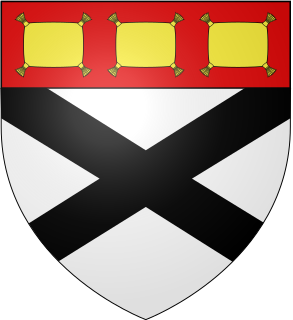 W
WEarl of Annandale and Hartfell is a title in the Peerage of Scotland, created in 1661 for James Johnstone.
 W
WThe Principality or Margraviate of (Brandenburg-)Ansbach was a free imperial principality in the Holy Roman Empire centered on the Franconian city of Ansbach. The ruling Hohenzollern princes of the land were known as margraves, as the principality was a margraviate.
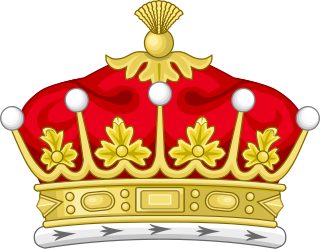 W
WEarl of Arundel is a title of nobility in England, and one of the oldest extant in the English peerage. It is currently held by the duke of Norfolk, and is used by his heir apparent as a courtesy title. The earldom was created in 1138 or 1139 for the Norman baron William d'Aubigny. Its origin was the earlier grant by Henry I to his second wife, Adeliza of Louvain, of the forfeited honour of Arundel, which included the castle and a large portion of Sussex. After his death she married William, who thus became master of the lands, and who from about the year 1141 is variously styled earl of Sussex, of Chichester, or of Arundel. His first known appearance as earl is at Christmas 1141. Until the mid-13th century, the earls were also frequently known as Earl of Sussex, until this title fell into disuse. At about the same time, the earldom fell to the originally Breton FitzAlan family, a younger branch of which went on to become the Stuart family, which later ruled Scotland and England.
 W
WThis is a list of the 168 present and extant barons in the peerage of the Kingdom of Spain.
 W
WThe Principality of Bayreuth or Margraviate of Brandenburg-Bayreuth was an immediate territory of the Holy Roman Empire, ruled by a Franconian branch of the Hohenzollern dynasty. Since Burgrave Frederick VI of Nuremberg was enfeoffed with the Margraviate of Brandenburg in 1415/17, the Hohenzollern princes transferred the margravial title to their Franconian possessions, though the principality never had been a march. Until 1604 they used Plassenburg Castle in Kulmbach as their residence, hence their territory was officially called the Principality of Kulmbach or Margraviate of Brandenburg-Kulmbach until the Empire's dissolution in 1806.
 W
WThe following is a list of lords and later on margraves of Bergen op Zoom. Bergen op Zoom became separated from the lordship of Breda in 1287 under the nominal overlordship of the duchy of Brabant. In 1559 the lordship was elevated to the rank of margraviate. The title was only a nominal one until 1795 when it was abolished.
 W
WThis article lists the Margraves and Electors of Brandenburg during the period of time that Brandenburg was a constituent state of the Holy Roman Empire.
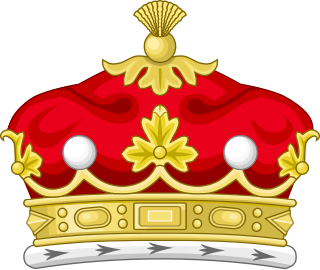 W
WMarquess of the County of Bute, shortened in general usage to Marquess of Bute, is a title in the Peerage of Great Britain. It was created in 1796 for John Stuart, 4th Earl of Bute.
 W
WThe March of Carniola was a southeastern state of the Holy Roman Empire in the High Middle Ages, the predecessor of the Duchy of Carniola. It corresponded roughly to the central Carniolan region of present-day Slovenia. At the time of its creation, the march served as a frontier defense against the Kingdoms of Hungary and Croatia.
 W
WThe title Duke of Gordon has been created once in the Peerage of Scotland and again in the Peerage of the United Kingdom.
 W
WMarquess of Huntly is a title in the Peerage of Scotland created on 17 April 1599 for George Gordon, 6th Earl of Huntly. It is the oldest existing marquessate in Scotland, and the second-oldest in the British Isles, only the English marquessate of Winchester being older. The Marquess holds the following subsidiary titles: Lord Gordon of Strathaven and Glenlivet and Earl of Aboyne, and Baron Meldrum, of Morven in the County of Aberdeen
 W
WMarquess of Huntly is a title in the Peerage of Scotland created on 17 April 1599 for George Gordon, 6th Earl of Huntly. It is the oldest existing marquessate in Scotland, and the second-oldest in the British Isles, only the English marquessate of Winchester being older. The Marquess holds the following subsidiary titles: Lord Gordon of Strathaven and Glenlivet and Earl of Aboyne, and Baron Meldrum, of Morven in the County of Aberdeen
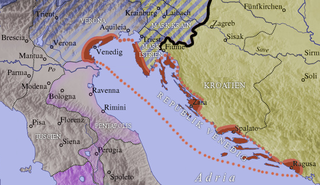 W
WThe March of Istria was originally a Carolingian frontier march covering the Istrian peninsula and surrounding territory conquered by Charlemagne's son Pepin of Italy in 789. After 1364, it was the name of the Istrian province of the Habsburg Monarchy, the Austrian Empire and Austria-Hungary.
This article lists the margraves of Meissen, a march and territorial state on the eastern border of the Holy Roman Empire.
 W
WThe Burgraviate of Nuremberg was a state of the Holy Roman Empire from the early 12th to the late 15th centuries. As a burgraviate, it was a county seated in the town of Nuremberg; almost two centuries passed before the burgraviate lost power over the city, which became independent from 1219. Eventually, the burgraviate was partitioned to form Brandenburg-Ansbach and Brandenburg-Bayreuth.
 W
WViscount of Oxfuird is a title in the Peerage of Scotland. It was created in 1651 for Sir James Makgill, 1st Baronet, along with the subsidiary title of Lord Makgill of Cousland, also in the Peerage of Scotland, with remainder to his "heirs male of tailzie and provision whomsoever". He had already been created a Baronet, of Makgill, in the Baronetage of Nova Scotia on 19 July 1625, with remainder to heirs male whatsoever. The remainder to heirs male whatsoever was a Scottish concept that permitted inheritance by persons not descended from the original grantee, but descended in the male line from male-line ancestors of the grantee. However, on the death of the first Viscount's son, the second Viscount, the Lordship and Viscountcy were assumed by his daughter Christian, as heir of tailzie and provision. Her son Robert Maitland Makgill also voted as Viscount of Oxfuird at the election of Scottish Representative Peers in 1733.
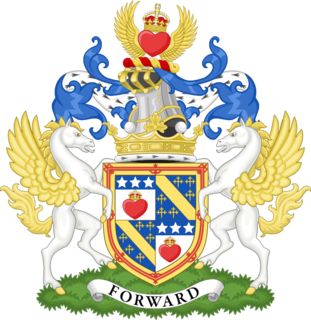 W
WMarquess of Queensberry is a title in the Peerage of Scotland. The title has been held since its creation in 1682 by a member of the Douglas family. The Marquesses also held the title of Duke of Queensberry from 1684 to 1810, when it was inherited by the Duke of Buccleuch.
 W
WMarquess of Queensberry is a title in the Peerage of Scotland. The title has been held since its creation in 1682 by a member of the Douglas family. The Marquesses also held the title of Duke of Queensberry from 1684 to 1810, when it was inherited by the Duke of Buccleuch.
 W
WThe Saxon Eastern March was a march of the Holy Roman Empire from the 10th until the 12th century. The term "eastern march" stems from the Latin term marchia Orientalis and originally could refer to either a march created on the eastern frontier of the East Frankish duchy of Saxony or another on the eastern border of the Duchy of Bavaria: the Bavarian marchia Orientalis, corresponding to later Austria.
 W
WIn Scotland, a baron is the head of a feudal barony, also known as a prescriptive barony. This used to be attached to a particular piece of land on which was situated the caput or essence of the barony, normally a building, such as a castle or manor house. Accordingly, the owner of the piece of land containing the caput was called a baron. According to Grant, there were around 350 identifiable local baronies in Scotland by the early fifteenth century and these could mostly be mapped against local parish boundaries. The term baron was in general use from the thirteenth century to describe what would have been known in England as a knight of the shire.
 W
WStobo is a title in the Baronage of Scotland which takes its name from Stobo in the Scottish Borders.
 W
WHalydean is a Scottish feudal Crown Barony and Lordship in Roxburghshire in the neighbourhood of Kelso, in the Borderlands of Scotland, along the River Tweed. This area along the Tweed is home to the Scottish border clans, including the Armstrongs, Douglases, Elliots, Johnstones, Kers, Moffats, and many others. The Barony and Lordship of Halydean (Holydean) is one of the oldest Norman feudal baronies in Scotland with a living claimant.
 W
WThis is a list of the 141 present and extant viscounts in the peerage of the Kingdom of Spain.
 W
WThis is an index of Welsh peers and baronets whose primary peerage, life peerage, and baronetcy titles include a Welsh place-name origin or its territorial qualification is within the historic counties of Wales.
 W
WMarquess of Winchester is a title in the Peerage of England that was created in 1551 for the prominent statesman William Paulet, 1st Earl of Wiltshire. The marquessate is the only English one in existence (extant) therefore its holder is considered the premier marquess of England. The current holder is Nigel Paulet, 18th Marquess of Winchester whose son uses the courtesy title Earl of Wiltshire.